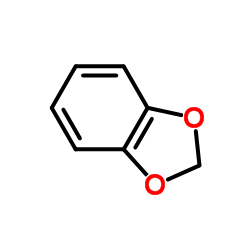Induction of rat-hepatic microsomal cytochrome P-450 and aryl hydrocarbon hydroxylase by 1,3-benzodioxole derivatives.
M Murray, C F Wilkinson, C E Dube
Index: Xenobiotica 15(5) , 361-8, (1985)
Full Text: HTML
Abstract
Several 1,3-benzodioxoles (BD) and related compounds were studied in relation to their ability to generate metabolite complexes with hepatic cytochrome P-450 following administration in vivo to rats. BD derivatives that formed stable metabolite complexes with cytochrome P-450 were considerably more effective inducers of cytochrome P-450 and aryl hydrocarbon (benzo[alpha]pyrene) hydroxylase (AHH) activity than derivatives that did not form stable complexes. Linear regression analysis showed that AHH activity was well correlated (r = 0.980) with total (i.e. complexed plus uncomplexed) cytochrome P-450 content and was not correlated with levels of uncomplexed cytochrome P-450. Aminopyrine N-demethylase (APDM) activity in hepatic microsomes from rats treated with 1,3-benzodioxoles was moderately correlated in a linear relationship with uncomplexed levels of cytochrome P-450 and not with total cytochrome P-450.
Related Compounds
| Structure | Name/CAS No. | Molecular Formula | Articles |
|---|---|---|---|
 |
1,3-Benzodioxole
CAS:274-09-9 |
C7H6O2 |
|
Smooth photocatalytic preparation of 2-substituted 1,3-benzo...
2011-01-10 [Chemistry 17(2) , 572-9, (2011)] |
|
Computer graphics analysis of the interaction of alkoxy meth...
1995-02-01 [Toxicol. Lett. 76(1) , 39-45, (1995)] |
|
Synthesis and cytotoxicity of podophyllotoxin analogues modi...
2003-01-01 [Eur. J. Med. Chem. 38(1) , 65-74, (2003)] |
|
Sesamol as an inhibitor of growth and lipid metabolism in Mu...
1997-06-01 [Lipids 32(6) , 605-10, (1997)] |
|
A natural component as coinitiator for unfilled dental resin...
2007-07-01 [J. Biomed. Mater. Res. B. Appl. Biomater. 82(1) , 44-50, (2007)] |